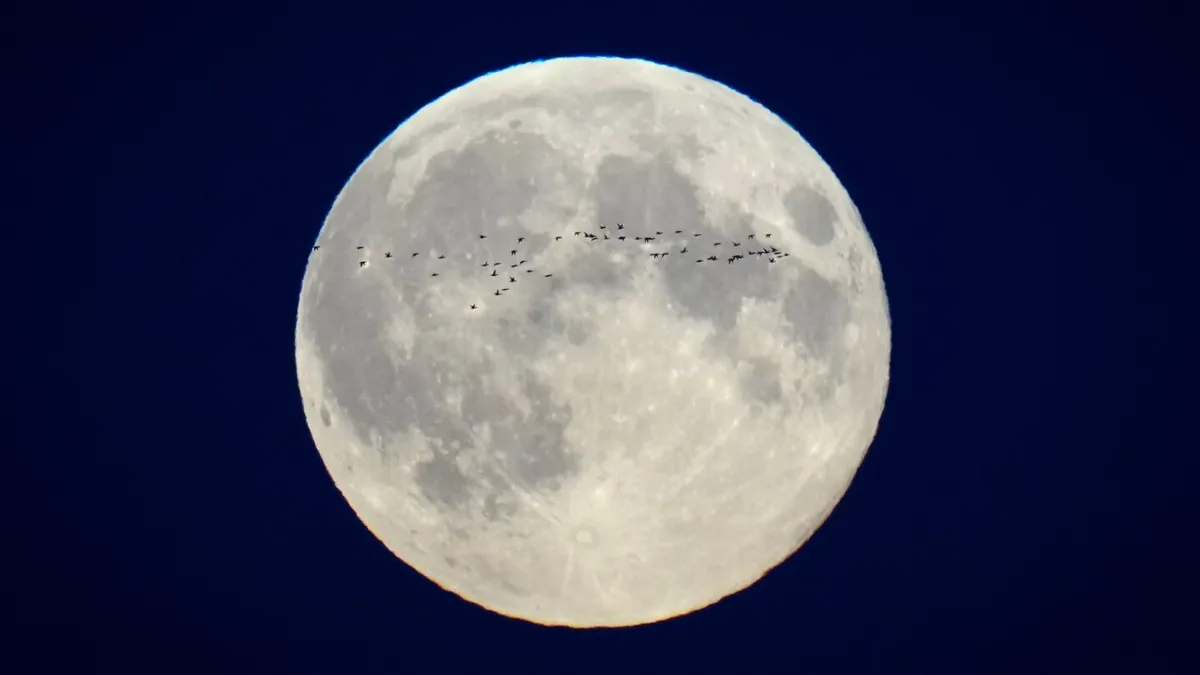
CAPE CANAVERAL, Fla. — A significant milestone in space exploration was achieved on Sunday as a private lunar lander, known as the Blue Ghost, successfully touched down on the moon. This lander, developed by Firefly Aerospace, is equipped with a drill, vacuum, and a variety of experiments for NASA. The landing marks a pivotal moment in the efforts of private companies to establish a sustainable business presence on Earth’s celestial neighbor ahead of future astronaut missions.
The Blue Ghost lander made its descent from lunar orbit using an autopilot system, targeting the slopes of an ancient volcanic dome located in an impact basin on the moon’s northeastern edge. Confirmation of the successful touchdown was received by the company’s Mission Control based in Austin, Texas, approximately 225,000 miles (360,000 kilometers) away. Will Coogan, Firefly’s chief engineer, jubilantly announced, “You all stuck the landing. We’re on the moon.” This achievement makes Firefly Aerospace the first private company to successfully land a spacecraft on the moon without it crashing or tipping over—an accomplishment that even some countries have struggled to achieve.
With this landing, only five entities—Russia, the United States, China, India, and Japan—can claim successful lunar landings. Just half an hour after its touchdown, the Blue Ghost began transmitting pictures from the lunar surface, including a selfie that was slightly obscured by the sun's glare. A subsequent image captured the Earth, a bright blue dot amidst the vast darkness of space. This successful mission is part of NASA’s ongoing efforts to cultivate a lunar economy through partnerships with private enterprises.
The Blue Ghost lander, named after a rare species of fireflies in the U.S., boasts a compact design standing 6 feet 6 inches (2 meters) tall and 11 feet (3.5 meters) wide, enhancing its stability on the moon’s surface. Launched in mid-January from Florida, this lander carried a total of 10 experiments for NASA, with the space agency investing $101 million for the delivery and an additional $44 million for the onboard science and technology. This mission represents the third under NASA’s commercial lunar delivery program, aimed at fostering competition among private businesses while laying the groundwork for future astronaut missions.
Firefly’s Ray Allensworth highlighted the lander’s ability to navigate around potential hazards such as boulders to ensure a safe landing. Although the exact location of the lander is still being analyzed, initial data suggests it landed within the designated 328-foot (100-meter) target zone in Mare Crisium. The onboard experiments are expected to operate for two weeks, until lunar daytime concludes and the lander goes into hibernation. Among the equipment on board are a vacuum designed to collect lunar soil for analysis and a drill capable of measuring temperatures up to 10 feet (3 meters) beneath the surface.
The Blue Ghost is not alone in its lunar endeavors; two additional landers are set to follow closely behind. A tall and slender 15-foot (4 meters) lander operated by Houston-based Intuitive Machines is scheduled to land on Thursday, targeting a site just 100 miles (160 kilometers) from the moon's south pole. This mission is particularly significant as it aims to improve upon the previous attempt by Intuitive Machines, which resulted in a tipped-over lander.
A third lander from Japanese firm ispace is expected to land in three months. This mission also represents a second attempt for ispace, as its initial lander crashed in 2023. The moon’s surface is littered with remnants of past missions, highlighting the challenges involved in lunar exploration. As NASA aims to maintain a pace of two private lunar landings per year, it acknowledges that some missions may not succeed, as noted by Nicky Fox, NASA’s top science officer. “It really does open up a whole new way for us to get more science to space and to the moon,” Fox stated.
Unlike the Apollo missions, which were backed by billions of dollars and manned by experienced astronauts, today’s private companies operate on tighter budgets with robotic landers that must autonomously navigate the lunar landscape. Firefly CEO Jason Kim expressed satisfaction with the mission’s execution, stating, “We got some moon dust on our boots.” This successful landing by the Blue Ghost marks a new chapter in lunar exploration and the burgeoning commercial space industry.